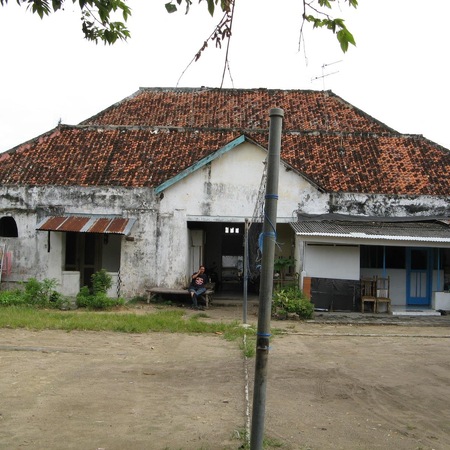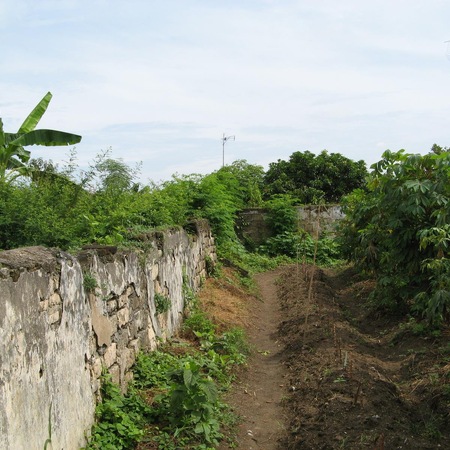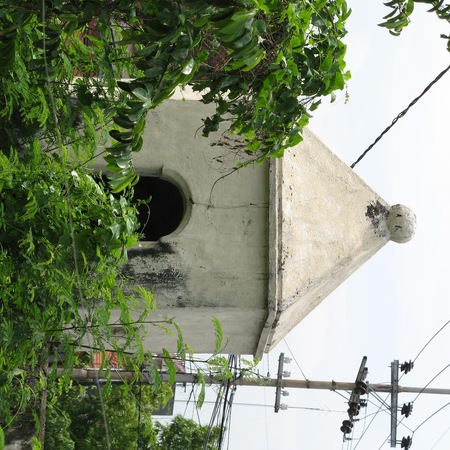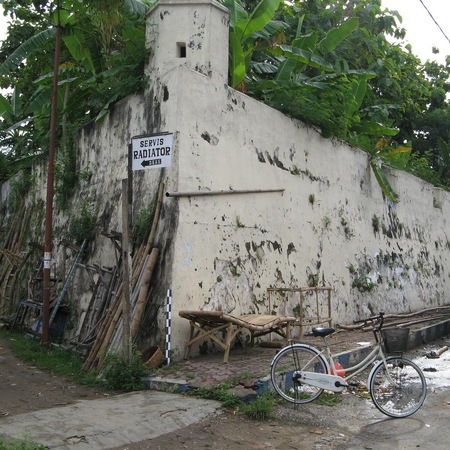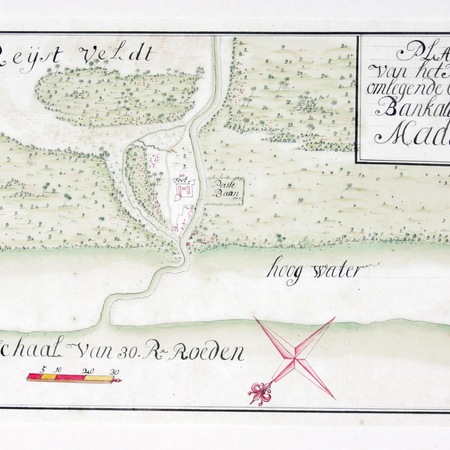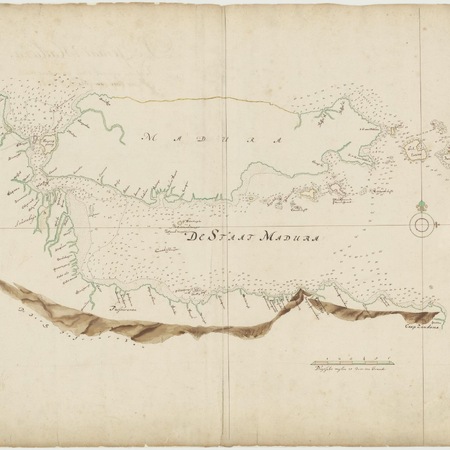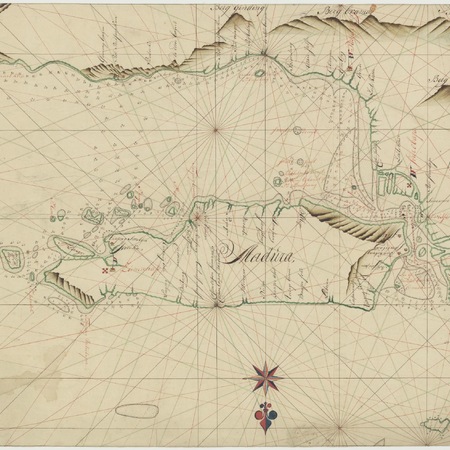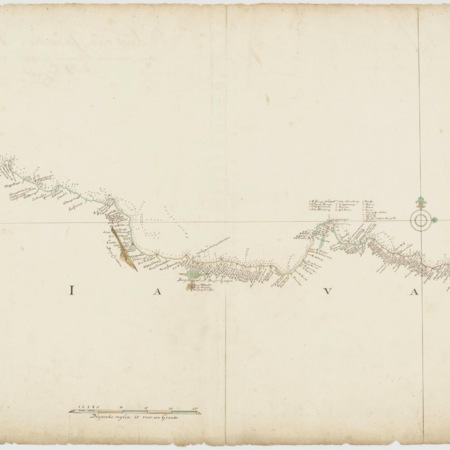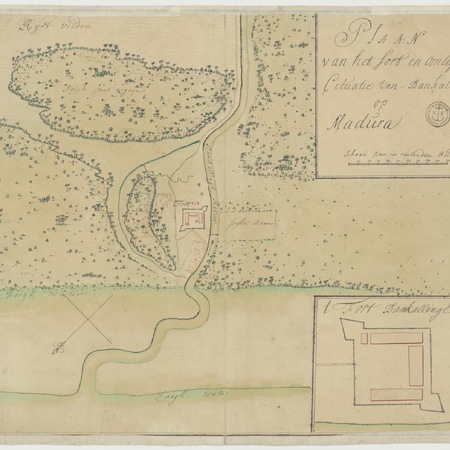Following the First Javanese War of Succession (1677-1797) between sultan (soesoehoenan) Pakubuwono I and his uncle, Pangerang Puger, the Dutch gained control of the eastern half of Madura. In 1705 the Dutch recognized Puger, who took the title of Pakubuwono I, as lord of east Madura. In 1707 they signed a treaty in which the VOC got the right to build a fort in Bangkalan (Bancallan, Balangakallang) in West-Madura, the small wooden fort with two diagonal bastions stood opposite the royal palace.
Cakrangingrat supported the Dutch during the Chinese-Mataram War (1740-1743). After the war there was a conflict with the company because Cakrangingrat demanded the two other regencies of Madura as reward for his support. He was captured and banished. His son was installed as prince
regent under the name Chakraningrat I in 1707. The wooden fort was replaced by a brick fort of 80 x 82,4 m with four half-bastions and a moat. On each bastion were four canons. The walls were 0.6 m thick and 4.5 m high. Inside the fort stood four buildings.
The garrison of 25 soldiers and one European lieutenant also served as guard of honour of the sultan
In the 19th century the fort was classified as a defence work of the 4th rank against an indigenous enemy. In 1863 the garrison were removed and the fort disarmed. The civil government should keep the fort in such a good condition that it could be defended in case of war or rebellion.
In 2008 the fort of Bangkalan housed the local police force.
